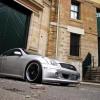RB20DET Issues
Announcements
-
Similar Content
-
Latest Posts
-
I'm firmly on the "zero compliance is good compliance" for FUCAs. I'd be looking to solid metal joints even if the primary reason for having them is because they facilitate the twist in the arm. I have never been more happy with the way the front suspension behaves than I have since I got rid of the FUCA bushes. Even the thin little (short lived) poly bushes in the Whiteline adjustables have too much compliance for my liking. It probably won't be long before I have sphericals nearly everywhere, probably including both top and bottom arms in the rear, and I'll start complaining about the increased costs for dental work. But I will be enjoying the driving more, I'm sure.
-
Plus, you'll get great experience in bedding in pads!
-
I have offset Nismo brackets so the fact the gktechs can pivot is less important to me. I have 170mm JIC arms with bushings - but they provide no adjustment and I'm not sure whiteline eccentric bushings will fit them (I don't want to ruin the bushings currently in them to find out). Ideally I want something with bushings + adjustment; hence why I'd like to find a pair of these. Unfortunately they aren't easy to find.
-
By Murray_Calavera · Posted
@Vee37 How much do you really care about finding these pads again? If your pads are quiet, work well and produce minimal dust, really isn't that enough? If you are set on finding the exact pads again, I suppose I'd do something like this - Visit your local Jax, find out what brand of pads they carry. If the Jax workshop you previously went to had the pads on the shelf, then you can almost guarantee it will be of said brand. I'm guessing you don't have the receipt for the previous work and pads. Can you visit a Jax workshop and see if they can look up your previous job to see what pads were fitted? Still no luck? Put your stalker hat on, find the staff that used to work at the Jax store and ask them. Talk to local workshops, try to find out where the mechanics went to. Talk to Jax workshops, maybe they relocated to another workshop. When it comes to mechanics, its a small world. You'd be surprised how easy it is to track someone down. If these ideas don't work, shit will start getting crazy very quickly.... You could find out every brand and model of pad that fits that car... and try them individually ticking each off the list if it wasn't the one you were looking for.... If you go down this path your going to want to learn how to swap pads yourself, it is very easy, takes minimal tools and space. If you have room to park the car you have room to swap the pads. Plus you have the advantage of making sure all the brake hardware goes back in so they won't squeal!
-




Recommended Posts
Create an account or sign in to comment
You need to be a member in order to leave a comment
Create an account
Sign up for a new account in our community. It's easy!
Register a new accountSign in
Already have an account? Sign in here.
Sign In Now